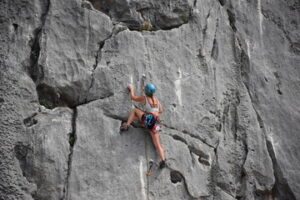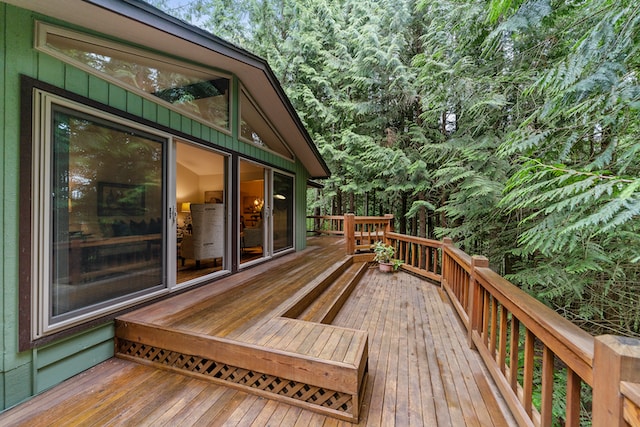Alta Climbing Gilbert is an addictive sport that delivers heady highs along with a steady dose of gratification. Unlike most other sports, climbing is a largely inclusive activity that allows children to become pros at 12 and older adults to continue to compete at elite levels well into their 60s.

To stay safe, climbers must communicate clearly with their belayers. Standard commands like “On belay?” and “Take” help keep both partners in sync.
Climbing is a high-intensity sport that involves strenuous physical activity and requires a combination of strength, technique and mental skills. The physical challenges are heightened outdoors where climbers ascend towering cliffs and scale multi-pitch routes that extend hundreds of feet above the ground. The heightened sense of exposure often elicits feelings of vulnerability and apprehension, requiring climbers to manage fear and maintain focus through the challenging climbing sequences.
When learning indoors, beginners typically start with bouldering, where a rope is not used and only the climber’s own bodyweight is required to move up the wall. This is a great way to develop basic climbing technique before progressing on to roped climbs, where the climber uses a combination of their own and other people’s bodies to move up the wall. The equipment required to rope climb varies, depending on the type of climb being undertaken. In general, you will need a harness, a belay device and a pair of rock shoes that have good traction. Many gyms offer climbing shoes to hire for a small fee, but it’s generally better value in the long run to invest in your own.
Once you’ve got the basics of rope climbing sorted, most people will progress to so-called top-roping whereby they tie a rope or piece of webbing (known as a belay line) to their harness and place it through a belay device, which takes in any slack as the climber moves upwards. A belay device will also catch and lower the climber if they fall. You’ll probably need a belay partner when you first begin, and they can help you get the hang of the process.
As you become more experienced, you’ll learn to read a route and plan your tactics. This is called “route reading” and can be quite a challenge. You’ll want to consider things like the difficulty of the route, any protection opportunities and potential hazards, such as weather changes or loose rocks.
If you’re new to outdoor climbing, it can be helpful to visit a crag where the routes are relatively easy to access and where you can hire an instructor to guide you on your journey. You’ll also need to have some extra gear, such as a chalk bag, some tape for cutting off blisters and a brush for cleaning dirt and sweat off your hands and the holds.
Indoor Climbs
Indoor climbing is done without ropes and involves trying to make it up a route of holds set on the wall, often in various shapes and sizes. It’s a fun and challenging sport that requires a combination of strength, technique and mental skill to fight your way up the wall!
There are a few essential pieces of equipment you’ll need for indoor climbing. First, a chalk bag (or ‘boulder bucket’) with some loose or dissolved chalk in it to help increase friction between your hands and the holds as you climb. Also, a brush for cleaning off chalk and dirt from the holds as you go and some tape to wrap cuts or blisters on your hands. Your local climbing wall may be able to hire these items for you if you don’t already have them.
For your climbing shoes, go for something that fits well and feels comfortable when you’re standing up, but doesn’t restrict movement when you’re in the bottom position on the wall. Then when it comes to climbing, try and avoid over-gripping – this is where you put so much pressure on the holds that they actually begin to feel too small! This will tire your forearms very quickly and will probably cause the dreaded “pump” – that throbbing feeling in your arms that tells you to stop climbing because you’re going to fall!
A strong core will help you maintain balance and power as you climb, so it’s worth working on your abs to make sure they are engaged. Breathing is important too – as long as you’re not scared or too tired, a deep breath will get more oxygen to your muscles and keep you calm.
Learning how to catch falls is also essential if you want to push yourself to the limit on the indoor wall or outdoor rock. Taking a fall correctly will build your confidence and allow you to improve your climbing performance immensely.
Indoor and outdoor climbing is a great sport for all ages and abilities. It’s a social and fun activity that can be practiced solo, with friends or in a team, so give it a go!
Slab Climbs
Slab climbing is the art of scaling less-than-vertical walls. Unlike overhangs or dihedrals, slabs have no real features other than the wall itself, so success depends on impeccable footwork and balance. Slab climbing is not for beginners – it’s a difficult style that requires more focus and precise movement than overhanging. But it’s also a great way to refine your technique, and many trad climbers say it helped them hone their skills before moving up to steeper test pieces.
The main difficulty of slab climbing comes from the lack of a good percentage of hand and foot holds. This makes it hard to trust your feet and a pain in the arse to fall off, so it’s incredibly important to have an exit strategy. This should include a well-placed belay and the ability to move quickly to your next clip or fall protection spot.
It’s also essential to use a lot of chalk on these types of routes, so that the rock is as dry as possible. This is because slab climbs tend to have low-percentage holds that are slippery enough to slide your hands right off them.
In addition to the slickness of the slab surface, you’ll also have to work around the awkward shape of the holds, which can throw off your balance and make it harder to stay on your feet. For this reason, it’s a good idea to keep your body upright and if you can, lean back into the wall rather than trying to stand on your toes.
As you get more advanced, it’s important to develop the ability to move efficiently on a slab by getting your weight directly over the motion point of your next move. This is a key point that often separates the top climbers from the beginners, so it’s a good skill to practice on slabs and overhangs alike.
Slab climbing is also a good workout for your legs, so try to wear stiff shoes to help prevent your feet from becoming pumped. In addition, when you’re done with a slab climb, drop your heels lower than your toes to stretch your calves.
Problems
When climbing, mistakes and misunderstandings can cause serious injury. Routine roped falls—in which a climber loses control of the rope—are the most common cause of climbing injuries. However, accidents can also occur when a climber uses improper equipment or techniques, such as slipping on a small ledge or slipping off the edge of a steep rock face. Other common problems include incorrect belay technique and faulty rigging.
New climbers tend to use too much arm and grip strength to pull themselves up the wall, causing them to spend huge amounts of energy that could be better spent pushing with their legs. This problem is called over-gripping and it may be a result of a desire to minimize the chance of falling off or a stress/anxiety response to heights. It can also be a sign that the climber is not strong enough for the route they’re on.
Another problem climbers often make is not cleaning their anchor properly when they come off belay. This can be a dangerous mistake, as it means that the climber is not attached to a backup system if the primary anchor fails. This can be especially dangerous if the climber is a lead climber, and the failure of the fixed hardware could lead to a fatal fall.
A third problem climbers face is wasting too much energy on “hold-shopping.” This happens when a climber moves their arms or legs to a hold, then pauses and tests out multiple foot and hand positions before finally trusting one of them. This is a waste of muscle and nerve endurance, and it can also be very distracting for the belayer.
Lastly, climbers sometimes leave too much chalk behind on the wall, which creates unsightly markings and limits other people’s ability to enjoy the same routes. Some parks are now restricting the use of chalk, especially in areas with sensitive rock formations. Hopefully, in the future climbers will be more careful to clean up after themselves, and find ways to mark their routes with natural materials. This is a big part of adhering to the principle of leaving no trace.
